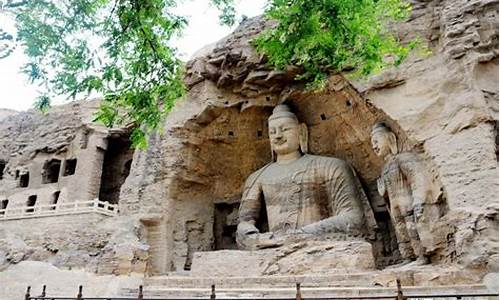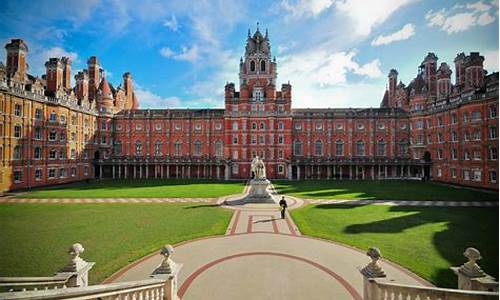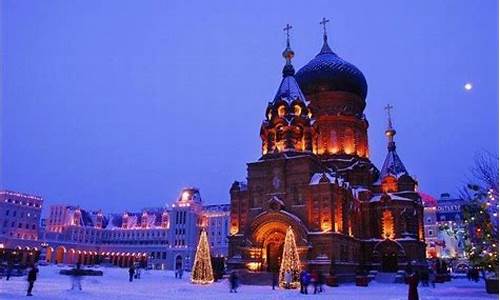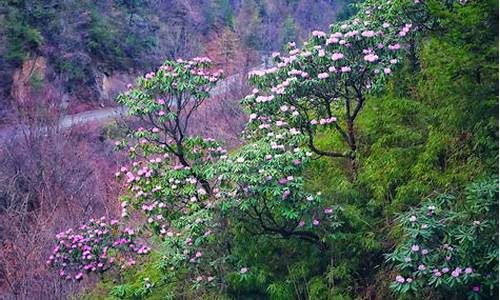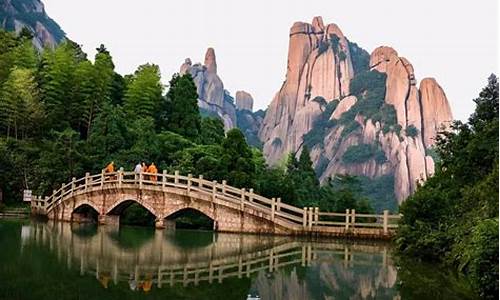您现在的位置是: 首页 > 旅游体验 旅游体验
日本旅游景点英语_日本旅游景点英语介绍
zmhk 2024-08-06 人已围观
简介日本旅游景点英语_日本旅游景点英语介绍 希望我能够为您提供一些与日本旅游景点英语相关的信息和建议。如果您有任何疑问或需要更深入的解释,请告诉我。1.求日本京都著名景点的英文介
希望我能够为您提供一些与日本旅游景点英语相关的信息和建议。如果您有任何疑问或需要更深入的解释,请告诉我。
1.求日本京都著名景点的英文介绍
2.世界著名旅游景点英语词汇
3.世界各国著名景点用英文表示
4.急求英语介绍旅游景点北海道,谢了

求日本京都著名景点的英文介绍
Arashiyama(岚山)
Arashiyama (岚山 ?) is a district on the western outskirts of Kyoto, Japan. It also refers to the mountain across the ?i River, which forms a backdrop to the district.
Notable tourist sites in Arashiyama include
The Iwatayama Monkey Park on the slopes of Mount Arashiyama. Over 170 monkeys live at the park. While the monkeys are wild, they have become accustomed to humans. The park is located on a small mountain not far from the Saga-Arashiyama rail station. Visitors can approach and photograph the monkeys. At the summit is a fenced enclosure, from within which visitors can feed the monkeys.
The romantic "Moon Crossing Bridge" (渡月桥,Togetsukyō), notable for its views of cherry blossoms and autumn colors on the slopes of Mt Arashiyama.
The tombstone of the Heike courtesan Kogo of Sagano.
Tenryū-ji, the main temple of the Rinzai school, one of the two main sects of Zen Buddhism in Japan.
The hamlet of Kiyotaki, a small scenic village at the base of Mt Atago, the home to a notable Shinto shrine.
Matsuo Shrine, half a mile south of the area, which is home to a blessed spring. It is also one of the oldest shrines in the Kyoto area, founded in 700. The alleged restorative properties of the spring bring many local sake and miso companies to the shrine for prayers that their product will be blessed.
Kameyama koen has a stone commemorating Zhou Enlai's visited to Arashiyama. He was moved by the cherry blossoms and mountain greenery. The four poems Zhou Enlai wrote about his visit are engraved on a stone monument: "Arashiyama in the Rain."
Nijō Castle(二条城)
Nijō Castle (二条城 ,Nijō-jō?) is a flatland castle located in Kyoto, Japan. The castle consists of two concentric rings of fortifications, the Ninomaru Palace, the ruins of the Honmaru Palace, various support buildings and several gardens. The surface area of the castle is 275,000 square meters, of which 8000 square meters is occupied by buildings.
History
Present plan of Nijō Castle (click for detailed view)In 1601, Tokugawa Ieyasu, the founder of the Tokugawa Shogunate, ordered all the feudal lords in Western Japan to contribute to the construction of Nijō Castle, which was completed during the reign of Tokugawa Iemitsu in 1626. Parts of Fushimi Castle, such as the main tower and the Kara Gate, were moved here in 1625-26.[1] It was built as the Kyoto residence of the Tokugawa Shoguns. The Tokugawa Shogunate used Edo as the capital city, but Kyoto continued to be the home of the Imperial Court. Kyoto Imperial Palace is located north-east of Nijo Castle.
The central keep, or donjon, was struck by lightning and burned to the ground in 1791.
In 1788, the Inner Palace was destroyed by a city-wide fire. The site remained empty until it was replaced by a prince's residence transferred from the Kyoto Imperial Palace in 1893.
In 1867, the Ninomaru Palace was the stage for the declaration by Tokugawa Yoshinobu, returning the authority to the Imperial Court. Next year the Imperial Cabinet was installed in the castle. The palace became imperial property and was declared a detached palace. During this time, the Tokugawa hollyhock crest was removed wherever possible and replaced with the imperial chrysanthemum.
In 1939, the palace was donated to the city of Kyoto and opened to the public the following year.
Ryōan-ji(龙安寺)
Ryōan-ji (Shinjitai: 竜安寺, Kyūjitai: 龙安寺 ?, The Temple of the Peaceful Dragon) is a Zen temple located in northwest Kyoto, Japan. Belonging to the Myoshin-ji school of the Rinzai branch of Zen Buddhism, the temple is one of the Historic Monuments of Ancient Kyoto, a UNESCO World Heritage Site.
The site of the temple was originally a Fujiwara family estate. It eventually came into the hands of the Hosokawa clan branch of the Fujiwaras. Hosokawa Katsumoto inherited the residence, and lived here before the ?nin War. Katsumoto willed the war-ravaged property to be converted into a Zen sect temple complex after his death. Later Hosokawa emperors are grouped together in what are today known as the "Seven Imperial Tombs" at Ryoan-ji. The burial places of these emperors -- Uda, Kazan, Ichijō, Go-Suzaku, Go-Reizei, Go-Sanjō, and Horikawa -- would have been comparatively humble in the period after their deaths. These tombs reached their present state as a result of the 19th century restoration of imperial sepulchers (misasagi) which were ordered by Emperor Meiji.[1]
Ryōan-ji's tsukubai (蹲踞 ?), which is a small basin provided at Japanese Buddhist temples for visitors to purify themselves by the ritual washing of hands and rinsing of the mouth.An object of interest near the rear of the monks quarters is the carved stone receptacle into which water for ritual purification continuously flows. This is the Ryōan-ji tsukubai (蹲踞 ?), which translates literally as "crouch;" and the lower elevation of the basin requires the user to bend a little bit to reach the water, which suggests supplication and reverence.[2] The kanji written on the surface of the stone are without significance when read alone. If each is read in combination with 口 (kuchi), which the central bowl is meant to represent, then the characters become 吾, 唯, 足, 知. This is read as "ware tada taru (wo) shiru" and translates literally as "I only know plenty" (吾 = ware = I, 唯 = tada = only, 足 = taru = plenty, 知 = shiru = know). The meaning of the phrase carved into the top of the tsukubai is simply that "what one has is all one needs" and is meant to reinforce the basic anti-materialistic teachings of Buddhism.
The absence of a dipper is intended to imply that the water is for the soul only and that it is necessary to bend the knee in humility in order to receive its blessing.
Kiyomizu-dera(清水寺)
Kiyomizu-dera (清水寺 ?), full name Otowa-san Kiyomizu-dera (音羽山清水寺 ?) is an independent Buddhist temple in eastern Kyoto. The temple is part of the Historic Monuments of Ancient Kyoto (Kyoto, Uji and Otsu Cities) UNESCO World Heritage site.[1] Not one nail is used in the whole temple. The temple should not be confused with Kiyomizu-dera in Yasugi, Shimane, which is part of the 33-temple route of the Chūgoku 33 Kannon Pilgrimage through western Japan.[2]
其实这些都是维基百科找来的,本来想给链接的,百度说我有广告,只贴了部分,其他的可用google 维基百科英文版找,包括景点介绍,历史什么的很全的。
世界著名旅游景点英语词汇
二条城 Nijo Castle
皇居外苑 Kokyogaien
二重桥 Nijubashi Bridge
心斎桥 Shinsaibashi
歌舞伎町(一番街) Kabukicho(First Avenue)
世界各国著名景点用英文表示
世界著名旅游景点英语词汇导语:世界上著名的旅游景点很多,但是苦于不知道英文怎么说,或者看到了英文不知道中文意思。现在我把这些著名的旅游景点英文名称都翻译归纳给大家,希望大家喜欢。
Asia 亚洲 The Himalayas 喜马拉雅山 Great Wall, China 中国长城
Forbidden City, Beijing, China 北京故宫 Mount Fuji, Japan 日本富士山
Taj Mahal, India 印度泰姬陵 Angkor Wat, Cambodia 柬埔寨吴哥窟
Bali, Indonesia 印度尼西亚巴厘岛 Borobudur, Indonesia 印度尼西亚波罗浮屠
Sentosa, Singapore 新加坡圣淘沙 Crocodile Farm, Thailand 泰国北榄鳄鱼湖
Pattaya Beach, Thailand 泰国芭堤雅海滩 Babylon, Iraq 伊拉克巴比伦遗迹
Mosque of St, Sophia in Istanbul (Constantinople), Turkey 土耳其圣索非亚教堂
Africa 非洲 Suez Canal, Egypt 印度苏伊士运河 Aswan High Dam, Egypt 印度阿斯旺水坝
Nairobi National Park%2 Nairobi National Park, Kenya 肯尼亚内罗毕国家公园
Cape of Good Hope, South Africa 南非好望角 Sahara Desert 撒哈拉大沙漠
Pyramids, Egypt 埃及金字塔 The Nile, Egypt 埃及尼罗河 Europe 欧洲
Notre Dame de Paris, France 法国巴黎圣母院 Effiel Tower, France 法国艾菲尔铁塔
Arch of Triumph, France 法国凯旋门 Elysee Palace, France 法国爱丽舍宫
Louvre, France 法国卢浮宫 Kolner Dom, Koln, Germany 德国科隆大教堂
Leaning Tower of Pisa, Italy 意大利比萨斜塔 Colosseum in Rome, Italy 意大利古罗马圆形剧场
Venice, Italy 意大利威尼斯 Parthenon, Greece 希腊巴台农神庙
Red Square in Moscow, Russia 莫斯科红场 Big Ben in London, England 英国伦敦大笨钟
Buckingham Palace, England 白金汉宫 Hyde Park, England 英国海德公园
London Tower Bridge, England 伦敦塔桥 Westminster Abbey, England 威斯敏斯特大教堂
Monte Carlo, Monaco 摩洛哥蒙特卡罗 The Mediterranean 地中海 Oceania 大洋洲
Great Barrier Reef 大堡礁 Sydney Opera House, Australia 悉尼歌剧院
Ayers Rock 艾尔斯巨石 Mount Cook 库克山 Easter Island 复活节岛 The Americas 美洲
Niagara Falls, New York State, USA 美国尼亚加拉大瀑布 Bermuda 百慕大
Honolulu, Hawaii, USA 美国夏威夷火奴鲁鲁 Panama Canal 巴拿马大运河
Yellowstone National Park, USA 美国黄石国家公园 Statue of Liberty, New York City, USA 美国纽约自由女神像
Times Square, New York City, USA 美国纽约时代广场 The White House, Washington DC., USA 美国华盛顿白宫
World Trade Center, New York City, USA 美国纽约世界贸易中心 Miami, Florida, USA 美国佛罗里达迈阿密
Central Park, New York City, USA 美国纽约中央公园 Yosemite National Park, USA 美国尤塞米提国家公园
Grand Canyon, Arizona, USA 美国亚利桑那州大峡谷 Hollywood, California, USA 美国加利佛尼亚好莱坞
Disneyland, California, USA 加利佛尼亚迪斯尼乐园 Las Vegas, Nevada, USA 美国内华达拉斯威加斯
Metropolitan Museum of Art, New York City, USA 纽约大都会艺术博物馆
Acapulco, Mexico 墨西哥阿卡普尔科 Cuzco, Mexico 墨西哥库斯科
;急求英语介绍旅游景点北海道,谢了
1,Mount Fuji, Japan 日本富士山富士山(日文:ふじさん,英文:Mount?Fuji)是日本国内最高峰,日本重要国家象征之一。横跨静冈县和山梨县的活火山,接近太平洋岸,东京西南方约80公里。
2,Taj Mahal, India 印度泰姬陵
泰姬陵(Taj Mahal ),是印度知名度最高的古迹之一,世界文化遗产,被评选为“世界新七大奇迹”。位于印度北方邦的阿格拉(Agra)城内,亚穆纳河右侧。由殿堂、钟楼、尖塔、水池等构成,全部用纯白色大理石建筑,用玻璃、玛瑙镶嵌,具有极高的艺术价值。
3,Angkor Wat, Cambodia 柬埔寨吴哥窟
吴哥窟(Angkor Wat),又称吴哥寺,位于柬埔寨,被称作柬埔寨国宝,是世界上最大的庙宇,同时也是世界上最早的高棉式建筑。吴哥窟原始的名字是Vrah Vishnulok,意思为“毗湿奴的神殿”,中国佛学古籍称之为“桑香佛舍”。
4,Bali, Indonesia?印度尼西亚巴厘岛
巴厘岛,印度尼西亚岛屿,位于爪哇岛东部,面积5620平方公里,岛上热带植被茂密,是举世闻名的旅游岛。巴厘岛是印尼17000多个岛屿当中最耀眼的一个岛屿,位于爪哇岛东部,面积5620平方公里,岛上山脉纵横、风情万种、景物绮丽。
5,Borobudur, Indonesia?印度尼西亚波罗浮屠
婆罗浮屠位于东南亚的印度尼西亚,大约于公元750年至850年间,由当时统治爪哇岛的夏连特拉王朝统治者兴建。“婆罗浮屠”这个名字的意思很可能来自梵语"Vihara Buddha Ur",意思就是“山顶的佛寺”。
深谙美食真谛的北海道人并没有因为高贵的海鲜而冷落了平民化的拉面。在北海道,各地拉面的风味不尽相同,其中,札幌的味噌(酱汤)口味拉面、旭川的酱油口味拉面和函馆的盐味拉面是北海道拉面的代表。尽管口味不同,但是面滑、汤鲜和配料量足却是北海道拉面的共通之处。如果你是一个拉面爱好者,那么“拉面王国”札幌是你不能错过的地方,在这里,你能够将北海道所有风味的拉面“一网打尽”。Deep knowledge of food essence of Hokkaido have not left out the populace because of noble seafood ramen. Hokkaido ramen flavors vary, Sapporo miso (miso soup) flavor ramen ramen and Hakodate, Asahikawa sauce taste of salt ramen are representative of Hokkaido ramen. Even though tastes different, surface slip, soup of fresh ingredients and foot is Hokkaido Ramen in common. If you're a ramen enthusiast, "Kingdom of the hand-pulled noodles" Sapporo: you can't miss the place, here, you can also do all of Northern sea lanes flavored Ramen "clean sweep".
札幌的拉面以汤浓、面大碗著称。这点其实不难理解,天寒地冻的北国,大碗满埂又香又浓的汤面,才能让人有饱足感。日本拉面3种基本口味的其中一种——味噌拉面,也是起源于札幌的。基本上来说,正统的札幌味噌拉面,味噌是要用新泻出产的;而拉面中最重要的汤头,尽管用的是绞肉,口感上绝对不能比整片肉片来的差。Sapporo Ramen is famous for its soup thick, wide Bowl. It is not difficult to understand, very cold north, Ridge was sweet and thick noodles in bowl full, to make full sense. Japan one of the hand-pulled noodles of the 3 basic tastes-the miso ramen, also originated in Sapporo. Basically, Orthodox Sapporo miso ramen, miso is to use Niigata produces, and hand-pulled noodles of the most important in tangtou, although with Grounded Meat and taste absolutely not worse than whole pork.
北海道因为夏季温度低,适合乳牛生长,因此其乳制品受到日本人的欢迎。无论是冰激凌还是鲜奶,用蜡笔小新的话说:“好浓的北海道味道!”北海道是世界上白巧克力的发源地,所以包装精美的“白色恋人”白巧克力、软巧克力在北海道的纪念品店中处处可见。Because low summer temperatures, Hokkaido, for dairy cows, dairy was welcomed by the Japanese. Whether it is ice cream or milk, with Crayon Shin Chan: "good strong taste of Hokkaido! "Hokkaido is the home of white chocolate in the world, so the package" white lovers "white chocolate, soft chocolate in Hokkaido in souvenir shops everywhere.
好了,今天关于“日本旅游景点英语”的话题就到这里了。希望大家通过我的介绍对“日本旅游景点英语”有更全面、深入的认识,并且能够在今后的学习中更好地运用所学知识。
